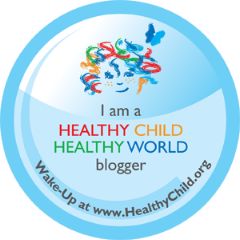10 for ’10

January’s not over yet, how are your goals and resolutions coming along? Are you making progress? As my trainer likes to say “progress, not perfection!” She’s on to something . . . if we strive for perfection, we set ourselves up for disappointment. If we seek to progress, then we allow ourselves to celebrate each small step on the way to our ultimate goal.
On this theme, here’s a list of 10 ways you can healthy-up your life in 2010 - some small changes to set you on a path to better living in the new year.
1. Ease up on animal fats. Animal products can contain synthetic hormones, antibiotics and chemicals such as dioxin, DDT and other pesticides, which concentrate in animal fat. The chemicals that accumulate in animal fats are transferred to our bodies when we eat them. When buying meat, poultry or dairy, look for low fat options. You can also do your body a favor by reducing how much meat you eat. Making even one vegetarian meal a week can make a big difference.
2. Go organic where you can. According to the Environmental Working Group, you can lower your pesticide exposure by 90% by avoiding the most contaminated conventionally grown produce: peaches, apples, sweet bell peppers, celery, nectarines, strawberries, cherries, lettuce, imported grapes, carrots, and pears. You can download the EWG pocket guide to fruits and veggies here.
3. Ban the can. Canned foods and beverages are lined with a resin that contains bisphenol-A (BPA), a hormone-disrupting chemical that’s building up in our environment and our bodies. The FDA is investigating as we speak, and most manufacturers are beginning to explore safer alternatives, but in the meantime you should choose foods that are fresh, dried, frozen or packaged in glass jars or tetra packs.
4. Read food labels – for real. Ever stop to read the ingredients label on packaged, processed foods? Learn which food additives are safer by visiting The Center for Science in the Public Interest’s food safety guide. Remember this: The shorter the list of ingredients, the less processed the food, and the less processed the food, the better it is for your body.
5. Wet your whistle with water. Americans drink an overwhelming amount of soda, sports drinks, energy boosters, juices and other bottled beverages. Many of these drinks are loaded with sweeteners and artificial flavors and colors. They’re also often bottled in plastic, which can leach additional chemicals into your drink. Make an investment in a reusable stainless steel bottle, and get in the habit of filling it with water before you leave the house.
6. Eat-in more often. When you eat at a restaurant or stop for take-out, you have very little control over what you’re eating. Save money, protect your health, and trim your waistline by cooking at home. Look for inspiration here at Semi-Sweet, and also check out my links for fast and flavorful recipes that’ll ease your dependence on take-out and increase your intake of whole foods, fruits and veggies.
7. Use fewer personal care products and use them less often. Our government doesn’t currently require health studies or pre-market testing for personal-care products before they’re sold. Nearly 90% of ingredients used in personal care products haven’t been evaluated for safety by any publicly accountable institution. Nearly all these chemicals can penetrate the skin, and some we ingest directly from our lips or hands. Visit the Campaign For Safe Cosmetics to learn more and to see what’s really in those products you use every day.
8. Kick the non-stick. Non-stick pans are coated with synthetic chemicals, and when the cook-surface gets scratched, tiny, yet toxic bits of inert plastic and leached aluminum cling to your food. What’s more, these pans emit toxic fumes when overheated. The safest alternatives are cast iron, stainless steel and oven-safe glass. If you have unscratched non-stick cookware and can’t afford to replace it right now, you can reduce the possibility of toxic fumes by cooking smart: never preheat nonstick cookware at high heat, don’t put it in an oven hotter than 500 degrees and use an exhaust fan over the stove.
9. Store & reheat leftovers safely. Avoid plastic when storing and re-heating leftovers. We know that chemicals routinely migrate into food and liquid placed in plastic containers and that heat accelerates the process. Use a paper towel instead of plastic wrap to cover food in the microwave, and use glass or ceramic food storage containers.
10. Clean greener. Our homes aren’t safe and clean if the air inside is polluted with chemicals from household cleaners. It’s pretty easy: Try natural alternatives (vinegar, baking soda and water); avoid anti-bacterials; and avoid the biggest hazards (acidic toilet bowl cleaners, air fresheners, oven cleaners, and corrosive drain openers).
© 2010, Sarah. All rights reserved.











Pingback: Semi-Sweet Reader Challenge: Can You Ban The Can? — Semi-Sweet